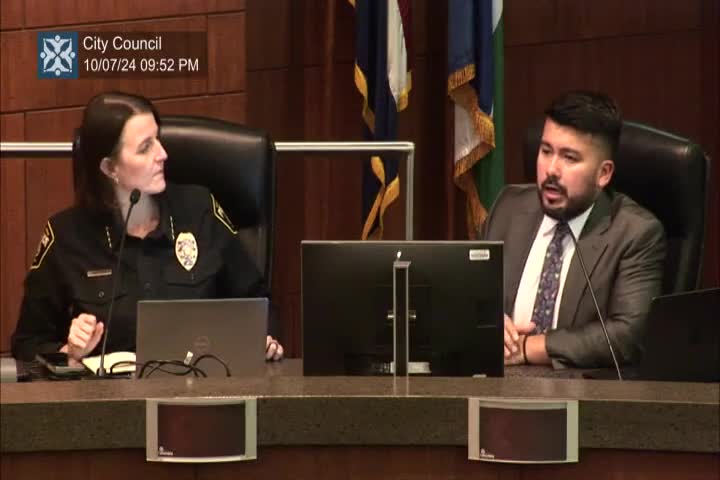City Council Debates Controversial Surveillance Technology for Safety
October 07, 2024 | Columbia, Boone County, Missouri
This article was created by AI summarizing key points discussed. AI makes mistakes, so for full details and context, please refer to the video of the full meeting. Please report any errors so we can fix them. Report an error »

During a recent government meeting, officials discussed the implementation of advanced surveillance technologies, including upgraded cameras and License Plate Recognition (LPR) systems, aimed at enhancing situational awareness in public spaces. The integration of these technologies is intended to improve safety, particularly during large events such as parades, where crowd management is crucial. Officials noted that while real-time monitoring of camera footage is possible, staffing limitations may hinder continuous oversight.
The conversation also touched on the transparency portal for law enforcement data, which has raised questions regarding the volume of warrants displayed. Officials explained that the data input into the portal is determined by local agencies, which can dictate the level of detail included. The portal is designed to provide comprehensive information, including vehicle counts and query statistics, to promote transparency in law enforcement activities.
Concerns were raised about the mandatory 30-day retention period for video surveillance footage, as established by state regulations. Officials clarified that this requirement is in place to ensure that video can be used as an investigative tool, allowing for follow-up on incidents that may occur after the footage is recorded.
The meeting also highlighted the importance of balancing public safety with privacy rights. Council members expressed mixed feelings about sharing data with other departments, emphasizing the need to protect vulnerable populations while ensuring community safety. Some members voiced skepticism about the effectiveness of increased surveillance in preventing crime, calling for more substantial data to support claims of its efficacy.
Overall, the discussions underscored the complexities of implementing surveillance technologies in a manner that prioritizes both safety and civil liberties, with officials acknowledging the need for ongoing dialogue and community engagement as these systems are developed and deployed.
The conversation also touched on the transparency portal for law enforcement data, which has raised questions regarding the volume of warrants displayed. Officials explained that the data input into the portal is determined by local agencies, which can dictate the level of detail included. The portal is designed to provide comprehensive information, including vehicle counts and query statistics, to promote transparency in law enforcement activities.
Concerns were raised about the mandatory 30-day retention period for video surveillance footage, as established by state regulations. Officials clarified that this requirement is in place to ensure that video can be used as an investigative tool, allowing for follow-up on incidents that may occur after the footage is recorded.
The meeting also highlighted the importance of balancing public safety with privacy rights. Council members expressed mixed feelings about sharing data with other departments, emphasizing the need to protect vulnerable populations while ensuring community safety. Some members voiced skepticism about the effectiveness of increased surveillance in preventing crime, calling for more substantial data to support claims of its efficacy.
Overall, the discussions underscored the complexities of implementing surveillance technologies in a manner that prioritizes both safety and civil liberties, with officials acknowledging the need for ongoing dialogue and community engagement as these systems are developed and deployed.
View full meeting
This article is based on a recent meeting—watch the full video and explore the complete transcript for deeper insights into the discussion.
View full meeting
